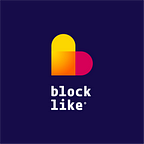Welcome to Digital Security Frontier Vision: The Voice of the Core Builders from Global Digital Security Industry #28.
In this interview, we are welcoming Eric Ramos, the founder & CEO of GoMama.
GoMama provide cross-border remittance solutions to serve unbanked and underbanked populations within Latin America, the Caribbean, and the U.S. Now they on a mission to: Secure Cross-Border Payments Real Time Money Transfer and Bill Pay.
They showed their plan in STO. However, In Cross-border Payments,STO is also the way to GO.
- What is the current situation of the cross-border settlements in the U.S.?
Performing a cross-border payment via traditional channels can take up to seven days to complete. These transfers rely mainly on traditional correspondent banking relationships and often require multiple intermediaries. By using distributed ledger technology, settlement times for cross-border payments can be greatly minimized.
2. How will the distributed ledger technology reduce the cost of cross-border settlements?
Many cross-border payments companies rely on banks to perform foreign currency exchanges. For instance, if GoMama wanted to convert 100 USD into Mexican Pesos a bank would dictate what the exchange rate would be. Instead of banks determining these exchange rates, cryptocurrency exchanges can do so. With enough volume, sending money through cryptocurrency exchanges to be converted into another currency can be cheaper than sending money through a bank. Because of the speed involved with distributed ledger technology, the amount of capital needed for prefunded accounts can be reduced as well.
3. Compared to other cross-border payment products what are the advantages of GoMama?
GoMama has exclusive partnerships in Latin America which will allow us to perform money transfers, bill payments, and adding minutes onto prepaid mobile phones. GoMama has a wider selection of bill payment options than PayPal’s cross-border payments company Xoom. GoMama’s use of distributed ledger technology will allow us to create a superior cross border payments product.
4. Why you choose the Stellar chain?
GoMama’s goal is to remain blockchain agnostic and use one or multiple blockchains in order to achieve the fastest possible settlement for transactions while also achieving the most favorable exchange rate. GoMama’s new partnership with Ripple will allow us to explore the benefits of distributed ledger technology. Ripple already has functioning payment corridors into Latin America. Stellar’s blockchain is still of great interest to us for creating faster and cheaper payment solutions but requires more development on the payment corridors.
5. Please give me a brief introduction to GoMama’s token economy model?
If GoMama pursues an STO, we anticipate our token economy model would mirror our traditional securities offering 1:1.
6. Why do you want to do an STO? What benefits will these security tokens bring to GoMama?
The potential advantages of performing STO’s are providing secondary liquidity for illiquid assets. Issuing securities through an IPO is seen as costly and time-consuming, while STO’s would be a faster and cheaper way to give investors liquidity. STO’s are more of a global offering to investors while IPO’s can be heavily tied to one country.
7. Have you communicated with tZERO, Openfinance or other exchanges(platforms)?
We have communicated with tZero about the possibility of performing an STO and being listed on their exchange. The growth of our company will determine if an STO is appropriate.
8. What’re the connections between GoMama’s utility token and security token?
Our goal is to give investors liquidity and give GoMama’s users liquidity as well. Whether that is through traditional securities and traditional rewards (e.g. reward points or cash back) or through digitized securities or utility tokens.
9. At present, many people think that the regulations related to cryptocurrency in the U.S. are more stringent. What do you think?
Regulators want to clearly define if different types of cryptocurrencies are securities. There are greater protections to investors if they buy regulated assets. Compliance measures must be put in place to limit the amount of money laundering. Of course, more regulations create higher barriers to entry for businesses, but GoMama believes that it is necessary for creating a product that is safe and beneficial to both companies and investors.
10. As a pioneer in cross-border payments, what are GoMama’s next plan? How will you provide more services for people without bank accounts?
After our campaign in the Latin America, GoMama will set our sights towards Africa and Asia for cross border payments. In addition to allowing recipients to pick up cash, our vision for GoMama is to allow customers to send money directly to recipient’s prepaid debit card. Both examples allow people without bank accounts to be able to accept money.
11. What do you think will be the future of cross-border settlements in the U.S.?
More companies will see the appeal of using distributed ledger technology to execute cross border payments. It is imperative that we get in early to disrupt this industry. The World Bank’s goal is to decrease the cost of remittances globally. It is our hope and goal to provide cost-effective solutions to our consumers.
- Check Chinese version of this interview here
- About Blocklike:Blocklike is an original media targeting China Blockchain and Security Token market, which Subscribers more than 60,000. At present, the number of Blocklike ’s exclusive interviews with the celebrities in Chinese blockchain industry has reached over 50, creating original content more than 100+. If you want more information about us, write to me “hi@blocklike.com”
- If you like what you read, please clap (max. is 50x)
- to follow us on Twitter, just follow us :)
